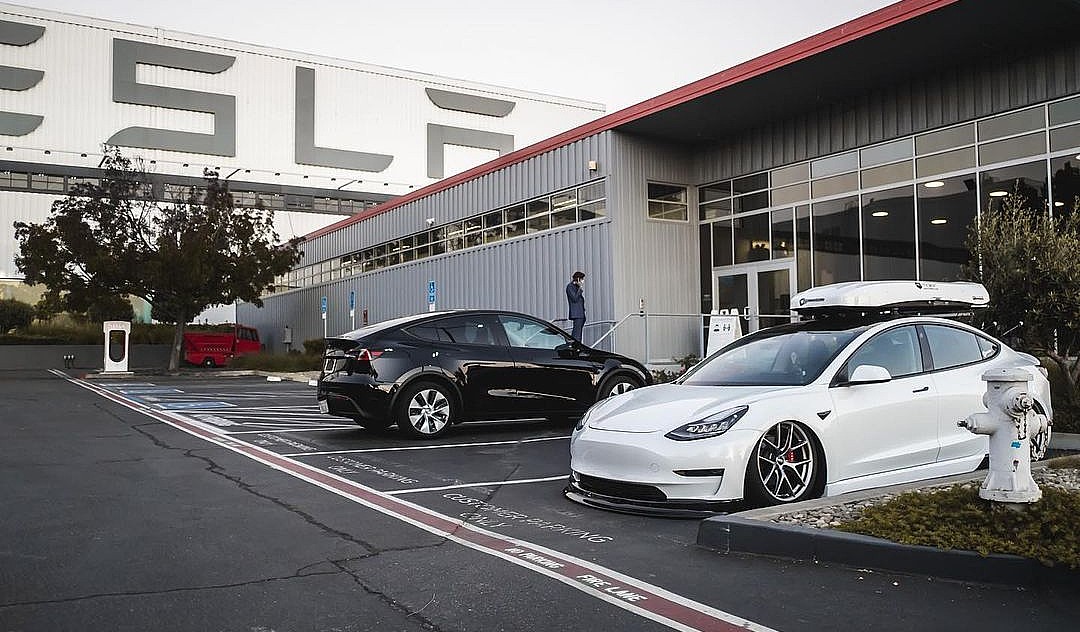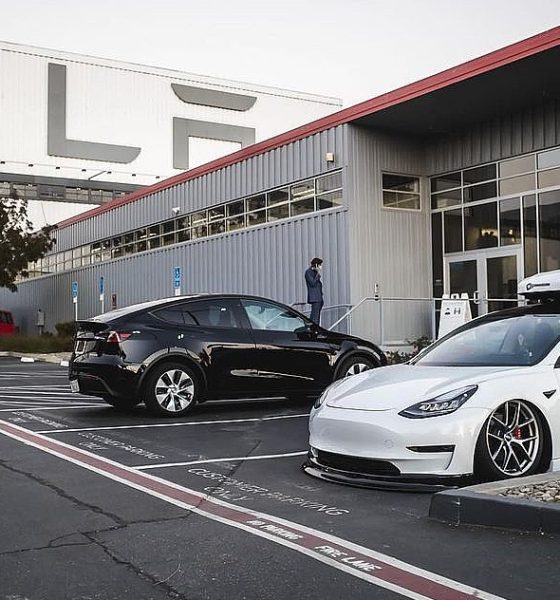

Investor's Corner
Tesla bear Jim Chanos isn’t shorting $TSLA anymore, he’s moved to a Put position
Tesla (NASDAQ: TSLA) bear Jim Chanos is no longer shorting the automaker’s stock. Instead, Elon Musk’s electric vehicle company’s longtime skeptic has moved on to a “Put” position.
Chanos said in an interview with CNBC that he has abandoned the “Short” position he once held on Tesla stock, SeekingAlpha reported. Evidently, the losses came to be too much for the investor to handle, so he has moved on. Interestingly, Chanos commended Musk in December for a job well done, admitting defeat but not moving his belief that TSLA stock will eventually meet its demise.
Short and put positions are similar because they are fundamentally used in a bearish manner to predict the decline of a security or index. Short selling involves the sale of a security not owned by the seller but borrowed and then sold in the market to be brought back up at a later time. If the stock rises and doesn’t fall, it opens the potential for large-scale losses.
Put options give the buyer the right to sell an underlying asset at an agreed price in an option contract. The maximum loss is the premium paid within the option.
Still not a true believer in Tesla’s valuation or its label as the world’s most valuable automaker, Chanos recognized that EPS estimates for the automaker in January 2019 for the 2022 and 2023 fiscal years were higher than what they are today, even though the stock was trading at only $50 per share split-adjusted.
That kind of tells you a little bit about what’s happened in the marketplace in that valuations have just gone parabolic for basically a company that’s still, in the eyes of analysts, earning at or below where they thought it would be earning two years ago. That’s kind of incredible,” he said.
But since January 2019, Tesla has grown significantly. The company only had one production facility in operation at the time, and Giga Berlin wouldn’t be announced until November of the same year. Tesla was only building three vehicles, and only one of them, the Model 3, was a mass-market car geared toward affordable price points that would open the doors for a wide-range EV adoption across the world. Tesla had already announced Giga Shanghai by this point, but the project was far from complete and wouldn’t start delivering vehicles until January 2020.
ALSO READ:
How Elon Musk’s biography led to a Tesla investor retiring at 43
January 2019 also saw the company’s Q4 2018 Earnings Call and the release of delivery and production figures for the electric automaker. In the final quarter of 2018, Tesla manufactured 86,555 cars, 61,394 of them were the Model 3. For the year, the company delivered 245,240 cars in total. It was Tesla’s third profitable quarter all-time at that point.
In comparison, Tesla more than doubled that output in 2020. It produced over 509,000 vehicles in 2020 alone, with 98% of them being delivered, leaving little room for inventory or “falling demand” arguments. Tesla managed to deliver 180,570 cars in Q4 2020 alone, well over 50% of the 2018 full-year delivery figures.
Additionally, Tesla short-sellers, bears, and skeptics alike rarely consider that the company is more than an automaker. With a line of sustainable energy products at competitive prices, Tesla has an energy sector that has cause for major disruption moving forward. Billionaire investor Chamath Palihapitiya says that Tesla will “double and triple again” after its energy business takes off, which could spell even worse news for Chanos and other short-sellers moving forward.
Disclaimer: Joey Klender is a TSLA Shareholder.

Investor's Corner
Tesla stock closes at all-time high on heels of Robotaxi progress

Tesla stock (NASDAQ: TSLA) closed at an all-time high on Tuesday, jumping over 3 percent during the day and finishing at $489.88.
The price beats the previous record close, which was $479.86.
Shares have had a crazy year, dipping more than 40 percent from the start of the year. The stock then started to recover once again around late April, when its price started to climb back up from the low $200 level.
This week, Tesla started to climb toward its highest levels ever, as it was revealed on Sunday that the company was testing driverless Robotaxis in Austin. The spike in value pushed the company’s valuation to $1.63 trillion.
Tesla Robotaxi goes driverless as Musk confirms Safety Monitor removal testing
It is the seventh-most valuable company on the market currently, trailing Nvidia, Apple, Alphabet (Google), Microsoft, Amazon, and Meta.
Shares closed up $14.57 today, up over 3 percent.
The stock has gone through a lot this year, as previously mentioned. Shares tumbled in Q1 due to CEO Elon Musk’s involvement with the Department of Government Efficiency (DOGE), which pulled his attention away from his companies and left a major overhang on their valuations.
However, things started to rebound halfway through the year, and as the government started to phase out the $7,500 tax credit, demand spiked as consumers tried to take advantage of it.
Q3 deliveries were the highest in company history, and Tesla responded to the loss of the tax credit with the launch of the Model 3 and Model Y Standard.
Additionally, analysts have announced high expectations this week for the company on Wall Street as Robotaxi continues to be the focus. With autonomy within Tesla’s sights, things are moving in the direction of Robotaxi being a major catalyst for growth on the Street in the coming year.
Elon Musk
Tesla needs to come through on this one Robotaxi metric, analyst says
“We think the key focus from here will be how fast Tesla can scale driverless operations (including if Tesla’s approach to software/hardware allows it to scale significantly faster than competitors, as the company has argued), and on profitability.”

Tesla needs to come through on this one Robotaxi metric, Mark Delaney of Goldman Sachs says.
Tesla is in the process of rolling out its Robotaxi platform to areas outside of Austin and the California Bay Area. It has plans to launch in five additional cities, including Houston, Dallas, Miami, Las Vegas, and Phoenix.
However, the company’s expansion is not what the focus needs to be, according to Delaney. It’s the speed of deployment.
The analyst said:
“We think the key focus from here will be how fast Tesla can scale driverless operations (including if Tesla’s approach to software/hardware allows it to scale significantly faster than competitors, as the company has argued), and on profitability.”
Profitability will come as the Robotaxi fleet expands. Making that money will be dependent on when Tesla can initiate rides in more areas, giving more customers access to the program.
There are some additional things that the company needs to make happen ahead of the major Robotaxi expansion, one of those things is launching driverless rides in Austin, the first city in which it launched the program.
This week, Tesla started testing driverless Robotaxi rides in Austin, as two different Model Y units were spotted with no occupants, a huge step in the company’s plans for the ride-sharing platform.
Tesla Robotaxi goes driverless as Musk confirms Safety Monitor removal testing
CEO Elon Musk has been hoping to remove Safety Monitors from Robotaxis in Austin for several months, first mentioning the plan to have them out by the end of 2025 in September. He confirmed on Sunday that Tesla had officially removed vehicle occupants and started testing truly unsupervised rides.
Although Safety Monitors in Austin have been sitting in the passenger’s seat, they have still had the ability to override things in case of an emergency. After all, the ultimate goal was safety and avoiding any accidents or injuries.
Goldman Sachs reiterated its ‘Neutral’ rating and its $400 price target. Delaney said, “Tesla is making progress with its autonomous technology,” and recent developments make it evident that this is true.
Investor's Corner
Tesla gets bold Robotaxi prediction from Wall Street firm
Last week, Andrew Percoco took over Tesla analysis for Morgan Stanley from Adam Jonas, who covered the stock for years. Percoco seems to be less optimistic and bullish on Tesla shares, while still being fair and balanced in his analysis.

Tesla (NASDAQ: TSLA) received a bold Robotaxi prediction from Morgan Stanley, which anticipates a dramatic increase in the size of the company’s autonomous ride-hailing suite in the coming years.
Last week, Andrew Percoco took over Tesla analysis for Morgan Stanley from Adam Jonas, who covered the stock for years. Percoco seems to be less optimistic and bullish on Tesla shares, while still being fair and balanced in his analysis.
Percoco dug into the Robotaxi fleet and its expansion in the coming years in his latest note, released on Tuesday. The firm expects Tesla to increase the Robotaxi fleet size to 1,000 vehicles in 2026. However, that’s small-scale compared to what they expect from Tesla in a decade.
Tesla expands Robotaxi app access once again, this time on a global scale
By 2035, Morgan Stanley believes there will be one million Robotaxis on the road across multiple cities, a major jump and a considerable fleet size. We assume this means the fleet of vehicles Tesla will operate internally, and not including passenger-owned vehicles that could be added through software updates.
He also listed three specific catalysts that investors should pay attention to, as these will represent the company being on track to achieve its Robotaxi dreams:
- Opening Robotaxi to the public without a Safety Monitor. Timing is unclear, but it appears that Tesla is getting closer by the day.
- Improvement in safety metrics without the Safety Monitor. Tesla’s ability to improve its safety metrics as it scales miles driven without the Safety Monitor is imperative as it looks to scale in new states and cities in 2026.
- Cybercab start of production, targeted for April 2026. Tesla’s Cybercab is a purpose-built vehicle (no steering wheel or pedals, only two seats) that is expected to be produced through its state-of-the-art unboxed manufacturing process, offering further cost reductions and thus accelerating adoption over time.
Robotaxi stands to be one of Tesla’s most significant revenue contributors, especially as the company plans to continue expanding its ride-hailing service across the world in the coming years.
Its current deployment strategy is controlled and conservative to avoid any drastic and potentially program-ruining incidents.
So far, the program, which is active in Austin and the California Bay Area, has been widely successful.








